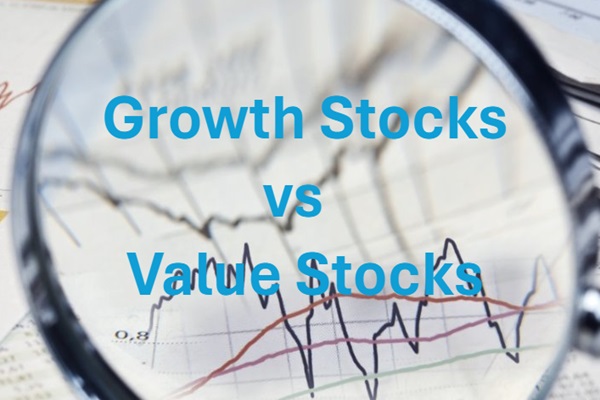Energy trading is a fundamental component of the global economy, enabling the efficient distribution of energy resources such as oil, natural gas, electricity, and renewables.
This complex market balances supply and demand, manage price risks and volatility and supports energy security worldwide.
What Is Energy Trading

At its core, energy trading involves transactions where participants buy and sell energy commodities to meet market demands and manage price risks.
The primary commodities in energy trading include:
Crude Oil: A globally traded commodity, with benchmarks like Brent Crude and West Texas Intermediate (WTI) guiding pricing.
Natural Gas: Traded in markets such as the Henry Hub, natural gas prices are influenced by weather and storage levels.
Electricity: Unlike other commodities, electricity cannot be stored efficiently, necessitating real-time balancing of supply and demand.
Renewables: Energy from sources like wind and solar is increasingly traded, with markets adapting to their intermittent nature.
Trading occurs on various platforms, including exchanges and over-the-counter (OTC) markets, allowing for standardised and customised contracts.
Market Participants and Trading Mechanisms
In addition, the energy trading market comprises a diverse range of participants, each playing a specific role:
Producers: Entities that extract or generate energy, such as oil companies, natural gas producers, and power plants.
Consumers: Industrial users, utilities, and end-users who require energy for operations.
Traders and Brokers: Individuals or firms facilitating transactions between buyers and sellers, often seeking to profit from price movements.
Speculators: Participants who aim to profit from market volatility without intending to take physical delivery of the commodity.
Hedgers: Companies that use trading to lock in prices and mitigate the risk of price fluctuations.
Moreover, energy trading operates through various mechanisms, each serving different purposes:
Spot Markets: Transactions for immediate delivery, reflecting current market prices.
Futures Contracts: Standardised agreements to buy or sell a commodity at a predetermined price on a future date, commonly traded on exchanges like the New York Mercantile Exchange (NYMEX).
Options: Contracts that provide the right, but not the obligation, to buy or sell a commodity at a set price before a specified date.
Swaps: Customised contracts where parties exchange cash flows or other financial instruments to manage exposure to price fluctuations
Electricity Trading and Renewable Energy Trading

As we have covered most crude oil and natural gas in other articles, we will touch more on electricity trading and renewables here.
For the former, electricity trading is unique due to the necessity of real-time supply and demand balancing. Independent System Operators (ISOs) manage these markets, operating day-ahead and real-time markets for electricity generation and consumption. Key concepts include locational marginal pricing (LMP), which accounts for energy cost, congestion, and losses.
As for the latter, the rise of renewable energy sources has introduced new dynamics to energy trading. For instance, China has implemented guidelines for green power trading, combining electricity prices with green certificate costs to encourage market-based approaches. In Europe, companies like InCommodities are leveraging advanced algorithms to navigate the complexities of renewable energy trading.
Energy Trading Strategies
1) Speculative Trading
It is perhaps the most high-risk, high-reward approach. In this strategy, traders aim to profit from anticipated price movements in energy commodities such as oil, natural gas, or electricity. Through analysing market fundamentals, technical indicators, geopolitical developments, and supply-demand imbalances, traders forecast future price trends and take long or short positions accordingly.
For instance, a trader anticipating a cold winter may go long on natural gas futures, anticipating increased heating demand and price spikes.
2) Arbitrage Strategies
These strategies exploit price discrepancies between different markets, contracts, or regions. Traders using arbitrage seek to buy low in one market and sell high in another, profiting from the spread.
For example, if electricity prices differ significantly between two regional grids due to transmission constraints or regulatory differences, traders might engage in cross-border electricity arbitrage. Similarly, discrepancies between Brent Crude and WTI pricing can offer arbitrage opportunities.
3) Hedging Strategies
These strategies are Primarily employed by energy producers, utilities, and large consumers to help protect against adverse price movements. The goal is not to profit but to stabilise revenues or costs by locking in future prices.
For example, a utility company may use long-term electricity futures contracts to hedge against rising spot prices, ensuring cost predictability for budgeting purposes. Similarly, an oil producer might hedge future production by selling crude oil futures, reducing the risk of falling prices affecting profitability.
Some traders also employ algorithmic and high-frequency trading strategies, using complex algorithms to execute trades at lightning speed. These strategies capitalise on small price movements and market inefficiencies, often processing thousands of trades per second. While they require significant technological infrastructure, they have become increasingly influential in energy markets, particularly in highly liquid products like crude oil and natural gas.
4) Seasonal and Weather-Based Strategies
These strategies have grown recently, particularly in electricity and natural gas trading. Traders monitor seasonal patterns, weather forecasts, and historical consumption data to anticipate demand fluctuations.
For instance, summer heatwaves may boost electricity demand for air conditioning, while cold snaps increase natural gas usage for heating. Energy traders who accurately interpret these patterns can position themselves advantageously ahead of price shifts.
Challenges and Regulatory Considerations
Energy trading faces several challenges:
Volatility: Energy markets are susceptible to rapid price changes due to geopolitical events, weather, and supply disruptions.
Regulatory Risks: Changes in regulations can impact market operations and profitability.
Infrastructure Limitations: Inadequate infrastructure can hinder efficient energy distribution and trading.
Moreover, energy markets are subject to regulation to ensure fair competition, protect consumers, and promote renewable energy development. Regulatory bodies oversee market operations, enforce compliance, and implement policies to encourage sustainable practices. For example, in the electricity market, regulators set policies to ensure competitiveness and protect consumers from price gouging.
Conclusion
In conclusion, energy trading is a complex yet essential aspect of the global economy, enabling the efficient distribution of energy resources and the management of price risks.
As the energy landscape evolves, particularly with the integration of renewable sources, understanding the mechanisms and dynamics of energy trading becomes increasingly vital for market participants and policymakers alike.
Disclaimer: This material is for general information purposes only and is not intended as (and should not be considered to be) financial, investment or other advice on which reliance should be placed. No opinion given in the material constitutes a recommendation by EBC or the author that any particular investment, security, transaction or investment strategy is suitable for any specific person.








